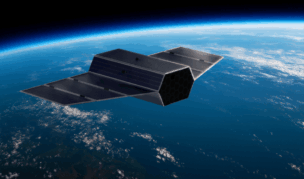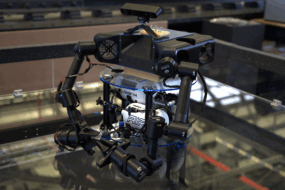Impulse Space secured a $300M Series C to boost the production of its Mira and Helios spacecraft and meet the satellite market’s growing demand for in-orbit mobility and orbital transfer services.
Linse Capital led the round, with additional support from DFJ Growth, Valor Equity Partners, Founders Fund, Lux Capital, RTX Ventures, DCVC, Airbus Ventures, Spring Tide Capital, First Principles Group, Balerion Space Ventures, Tamarack Global, and Trousdale Ventures.
Less than four years after its founding, the Series C brings Impulse’s total financing to $525M.
Right time, right place: While US civil space and defense priorities have shifted considerably under the Trump administration, Eric Romo—Impulse’s president and COO—said the company is uniquely positioned to thrive in this new reality. Impulse plans to make the most of what’s left in NASA’s budget, and to provide greater mobility capabilities for the DoD.
Since its founding, Impulse has signed over 30 contracts with government and commercial customers totaling nearly $200M, including:
- Two tactical space missions for the DoD;
- A multi-launch agreement with SES to deliver comms sats from LEO to GEO in less than eight hours;
- A NASA IDIQ VADR contract.
Sky-high demand: So far, Impulse has only flown two Mira spacecraft. To fulfill its growing backlog—and meet the goal of launching its first Helios spacecraft in Q3 2026—Impulse plans to use the new funds to hire more engineers, invest in new manufacturing facilities, and accelerate R&D for new vehicles that could fly future NASA and DoD missions.
“[Helios] contains a whole 13 tons of cryogenic propellant, which means it’s 10 feet in diameter and 14 feet high…And so when you’re talking about building multiple [such vehicles] in a facility that we’re in currently, you get real crowded, real fast,” Romo said.
Using Helios, Impulse is developing a GEO rideshare program starting in 2027. The idea is to offer commercial comsats a quicker and more affordable ride to GEO, compared with launching them on a dedicated heavy-lift rocket.
Silver linings: NASA’s proposed budget—which calls for leveraging more commercial solutions on deep-space journeys—makes Impulse a prime contender for future commercial missions to the Moon and Mars, according to Romo.
“There’s definitely stuff that we were working on—or hoping to work on—with NASA that is on the chopping block…[but] when you’re a company that’s excellent at high thrust in space propulsion, doing commercial landings on the Moon and Mars is kind of music to our ears,” Romo told Payload.
Compared to recent CLPS lunar missions—in which propulsion capabilities limited the amount of mass they sent—Helios could increase the mass to the Moon by 10x for each mission, according to Romo.




